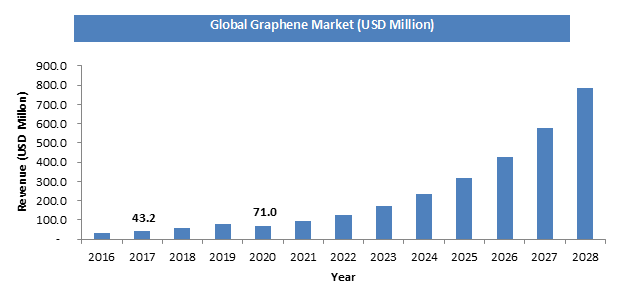sessions/Tracks
Sessions/Tracks
1.Graphene and 2D material Nano composites
2D nanomaterials similar as graphene/ graphene oxide( GO) reduced graphene oxide(rGO), silicate tones, concentrated double hydroxides( LDHs), transition essence dichalcogenides( TMDs), transition essence oxides( TMOs), black phosphorus( BP), graphitic carbon nitride( g- C3N4), hexagonal boron nitride( h- BN), antimonene( AM), boron. Graphene- grounded nanocomposites retain excellent mechanical, electrical, thermal, optic, and chemical parcels. These accoutrements have implicit operations in high- performance transistors, biomedical systems, detectors, and solar cells. Graphene is composed of a single subcaste of carbon tittles arranged in a two- dimensional( 2D) honeycomb chassis. It's a abecedarian structure block for a range of well- known carbon accoutrements similar as three- dimensional( 3D) graphite, one- dimensional( 1D) carbon nanotubes, and zero- dimensional( 0D) fullerene.
2.Graphene and its Applications
Graphene, a two- dimensional form of liquid carbon, either a single subcaste of carbon tittles forming a honeycomb chassis or several coupled layers of this honeycomb structure. Graphene is a material composed of carbon titles grouping that are hexagonally deposited. This arrangement results in monolayers of snippet thick. This material is part of one of the most abundant substances in nature, graphite( graphite can be set up, for illustration, in the mines of our pencils). One of the most striking operation graphene in our diurnal life is conductive essay and other coatings. Thanks to the parcels of graphene, these inks offer the parcels of a subcaste of the magical material. This has multiple operations for the assiduity, related to the consummation of ultra-flat electronic circuits.
3.Chemistry and biological studies of Graphene
Graphene also has veritably high thermal conductivity and, thus, could be used to remove heat from electronic circuits. Being veritably strong mechanically, it could be used as a altar for studying natural motes and accoutrements . Graphene is a single- snippet thick, two- dimensional distance of hexagonally arranged carbon tittles insulated from its three- dimensional parent material, graphite. Affiliated accoutrements include many- subcaste- graphene( FLG), ultrathin graphite, graphene oxide( GO), reduced graphene oxide( rGO), and graphene nanosheets( GNS).
4.Emerging Trends in the field of Graphene Nano Materials
Graphene is a disruptive technology; one that could open up new requests and indeed replace being technologies or accoutrements . It's when graphene is used both to ameliorate an being material and in a transformational capacity that its true eventuality can be realised. Graphene would also revolutionise solar energy! This remarkable material can be used to produce stronger and better solar cells that are easier and cheaper to produce than the silicon bones we use moment. Speaking of replacing silicon, graphene can also be used to make microchips.
5.Graphene and biomaterials for Health care
Graphene operations in biomedicine are multitudinous and can be classified into several main areas transport( delivery) systems, detectors, towel engineering and natural agents( for illustration antimicrobials). Delivery ofAnti-Cancer medicines. Among the astonishing parcels of graphene and GO nanomaterials, their high face area makes them an applicable selection for Nano therapy. Several reports are published on exercising these accoutrements , for delivery orco-delivery of anti-cancer medicines. Biomaterials play an integral part in drug moment — restoring function and easing mending for people after injury or complaint. Biomaterials may be natural or synthetic and are used in medical operations to support, enhance, or replace damaged towel or a natural function.
6.Graphene and Graphene oxide
The crucial difference between graphene and graphene oxide is that graphene is a substance made of carbon tittles clicked to each other in a repeating pattern of hexagons, whereas graphene oxide is an oxidized form of graphene that's laced with groups having oxygen tittles. Indeed though graphene oxide is made with the same tittles as our organs, apkins and cells, its bi-dimensional nature causes unique relations with blood proteins and natural membranes and can lead to severe goods like thrombogenicity and vulnerable cell activation.
7.Graphene chemistry
Graphene also has veritably high thermal conductivity and, thus, could be used to remove heat from electronic circuits. Being veritably strong mechanically, it could be used as a altar for studying natural motes and accoutrements . Single wastes of graphene, a curious material only 1 snippet thick, are 100 times further chemically reactive than double or triadic wastes, Stanford scientists say in a new paper published onlineJan. 17 in ACS Nano. Understanding graphene's chemical reactivity, they say, is crucial to putting this unique material to work. Indeed though graphene oxide is made with the same tittles as our organs, apkins and cells, itsbi-dimensional nature causes unique relations with blood proteins and natural membranes and can lead to severe goods like thrombogenicity and vulnerable cell activation
8.Graphite,Graphene & their polymer nano composites
Graphite, Graphene, and Their Polymer Nanocomposites presents a compendium of arising exploration trends in graphene- grounded polymer nanocomposites( GPNC). transnational experimenters from several disciplines partake their moxie about graphene, its parcels, and the geste of graphene- grounded mixes. Graphene- grounded nanocomposites retain excellent mechanical, electrical, thermal, optic, and chemical parcels. These accoutrements have implicit operations in high- performance transistors, biomedical systems, detectors, and solar cells.
9.Carbon Nanotubes and its applications
CNTs are exemplifications of true nanotechnology they're only about a nanometer in periphery, but are motes that can be manipulated physically and chemically in veritably useful ways. They find an inconceivable range of operations in electronics, accoutrements wisdom, energy operation, chemical processing, and numerous other fields. CNTs are exemplifications of true nanotechnology they're only about a nanometer in periphery, but are motes that can be manipulated physically and chemically in veritably useful ways. They find an inconceivable range of operations in electronics, accoutrements wisdom, energy operation, chemical processing, and numerous other fields.
10.Advanced 2D Materials
In accoutrements wisdom, the term single- subcaste accoutrements or 2D accoutrements refers to crystalline solids conforming of a single subcaste of tittles. These accoutrements are promising for some operations but remain the focus of exploration. Among possible amount accoutrements , 2D accoutrements defined then as thin layers that display physical parcels different from those of their bulk counterparts are of particular interest, owing to the numerous amount marvels that crop in the atomically thin limit. Quasi two- dimensional( 2D) accoutrements attained by the" graphene- suchlike" exfoliation attracted tremendous attention. similar accoutrements revealed unique electronic, thermal and optic parcels, which can be potentially used in electronics, thermal operation and energy conversion.
11.Synthetic Graphite and Natural graphite
Natural graphite is booby-trapped while synthetic graphite is produced from petroleum feedstocks. Both accoutrements are largely reused to yield a purified, mulled, spheroidized, and carpeted product. Natural graphite has to be booby-trapped and concentrated while synthetic graphite must be graphitized atca.,000 °C. Purified natural flake graphite exhibits a much advanced crystalline structure than synthetic and is thus more electrically and thermally conductive. Unlike synthetic, its capability to be molted and also pressed into wastes makes it the favored structure for heat cesspools, energy cells and gaskets.
12.Graphene modifications and Functionalization
The functionalized graphene sheets show enhanced chemical and thermal stabilities compared with GO and can be further modified by different chemical reactions, including amidation, surface-initiated polymerization, and reduction of metal ions
13.Novel hybrid carbon Materials
New cold-blooded carbon accoutrements similar as actuated carbon- carbon nanotubes( AC- CNTs) and carbon spheres actuated carbon- carbon nanotubes( CSs AC- CNTs) grounded on actuated carbon( AC) deduced from the recesses of Algerian date win have been prepared and characterized. Carbon nanotubes( CNTs) were first observed by Iijima in 1991 and are characterized by their nanosized concave tube- shaped structures( 6). Grounded on the number of layers, CNTs can be classified as either single- walled carbon nanotubes( SWCNTs) ormulti-walled carbon nanotubes( MWCNTs). Carbon nanotubes are a flawless spherical graphene subcaste with half of a fullerene patch at each end( Sarkar etal., 2018; Vashist etal., 2018a, b). CNTs are several nanometers in periphery, but several millimeters in length.
14.Large scale Graphene production and Characterization
By using Chemical Vapour Deposition large wastes of graphene can be produced. Some of the precursors are liquids that need to be faded first, to be used in the CVD process in its gassy form. It's veritably important that the tube is created with the right proportions and perfection. The most common ways used to characterize graphene and identify the presence of functional groups and morphological variations on the graphene wastes face are Raman Spectroscopy, Fourier- Transform Infrared Spectroscopy( FTIR),x-ray Diffraction( XRD),x-ray Photoelectron Spectroscopy( XPS), Transmission.
15.Graphene synthesis
Graphene can conflation by bow discharge system in the presence of H2 atmosphere with two to three layers having flake size of 100 – 200 nm( 180, 184). By rapid-fire heating process Arc discharge in an air atmosphere redounded in graphene nano wastes that are 100 – 200 nm wide generally with two layers There are 3 main ways to synthesize graphene, they're Chemical Vapor Deposition. Chemical or Tube Exfoliation from natural Graphite. Mechanical fractionalization from natural Graphite.











